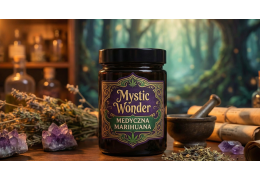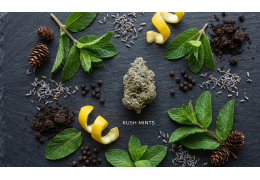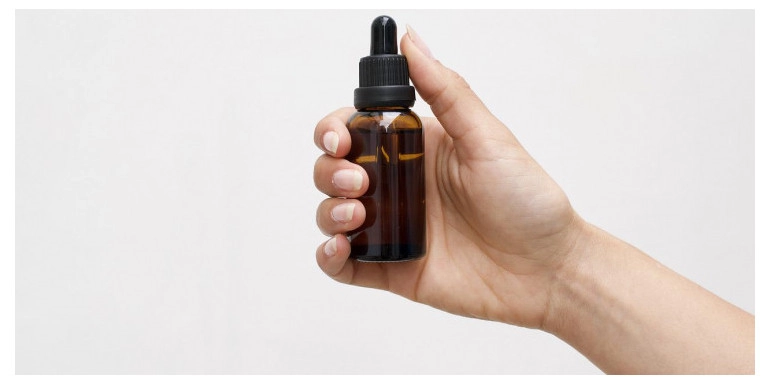Search in blog
Latest posts
A Certificate of Analysis (COA) is a laboratory report on the chemical composition (e.g., content) of a product or ingredient. In the context of industrial hemp derivatives, COA reports on the profile of cannabinoids, terpenes and impurities of CBD products.
Certificates of authenticity are used to verify that the content of a product is matched to the way it is advertised. These reports are important for checking whether hemp extracts and other derivatives or preparations contain less than 0.2% THC by weight, as defined by industrial hemp in the law.
All of our products and ingredients are supported by COA certifications, which indicate the level of cannabinoids. Tests are also carried out to check for hazardous compounds such as heavy metals or pesticides and reported in the certificate to ensure consumer safety.
A 2017 study found that nearly 70% of online CBD products are incorrectly labeled and contain much more or less CBD than advertised. For nutraceutical applications, knowing the exact potency and ingredients is extremely important.
For example, manufacturers may claim that a CBD product does not contain THC or claim that their product has some potency, but because there is little supervision, the possibility of "cheating the numbers" is increasing. This can be a serious problem for people who choose THC-free products to avoid psychoactive side effects or take a drug test because of work.
In an unregulated industry where new CBD companies are popping up everywhere, it's hard for customers to know exactly what they're paying for. Labeling alone is not foolproof, especially when products are sold online to customers who do not fully understand the ins and outs of the industry.
This is the reason why CERTIFICATES of authenticity are standard practice for reliable, transparent and law-abiding CBD producers. They provide transparency for both consumers and regulators to clearly define what is and is not in a given finished bulk product or ingredient.
There are several ways to find CERTIFICATES of Authenticity. Most companies will put them on their website or give them to customers on request. Make sure they are up to date and match the batch number on the product.
In the upper left-hand corner there is information allowing to identify the sample and the lot from which it comes. In the upper right corner you will find the address and contact details of the company selling the product. The QR code in the upper middle can be scanned by anyone to verify the authenticity of the report. It leads to a laboratory that has carried out the analysis so that consumers can cross-check that the certificate of authenticity has not been forged.
The bottom half of the first page shows the profile of the cannabinoids in the sample, detailing the cannabinoids detected and their concentrations. This is probably the most important section of COA, as it informs consumers exactly which cannabinoids are present in our oil. The ID column in the chart indicates which cannabinoids have been tested. 'ND stands for "undetected", which means that there was such a small amount, if any, in the sample that laboratory instruments could not detect it because it was below the limit of detection (LOD).
Basically, this means that it does not occur in the product. In the analysis, CBDA, CBDV, CBC and CBG were detected, and their concentration is given in milligrams per gram of product. This "Concentration" column shows the potency of the CBD oil being tested, which should be compared with the CBD concentrations advertised on the product label. Full-spectrum hemp extracts should contain many cannabinoids, including D9-THC, as long as the THC % by weight is below 0.2%.
Terpene profile analysis shows which terpenes were detected in the sample and their relative amount in weight percentages. It is terpenes that give industrial hemp products a unique taste and aroma. Variety of type and abundance can provide consumers with information about how it may smell or taste. Also this section shows that these are natural products and not artificial. In pure isolates and in counterfeit products, we can look for terpenes with a wide range.
The heavy metals, mycotoxins and microbial analysis diagram indicates which substances have been tested, together with the chemical symbol and name. The test method used determines the limit of determination and the permitted limits of the substance (EU guidelines).
The residual solvent test determines whether residual solvents or other impurities are present and whether they are present in harmful quantities. It can also determine whether the correct solvent purification process was followed during product development.
Another report in the COA is pesticide analysis, which lists a number of common pesticides tested in the sample. The unit in this case is "ppb" or parts per billion.
In an industry that is growing rapidly with limited regulation, it is extremely important as a consumer to know exactly what is going on. Certificates of analysis provide consumers with transparency and confidence so they can be confident in what they are buying.
Although COAs vary in appearance from lab to laboratory, the basic information presented in this post should be on each CERTIFICATE of Authenticity.
Dates and batch numbers of products must be provided so that consumers can ensure that the report is up to date and relates to the batch from which their product originates. The cannabinoid profile should conform to the product description, including the type of extract (full spectrum, etc.) And the power of the product.
Analysis of heavy metals, mycotoxins, microbes, pesticides and solvent residues can be used to ensure that industrial hemp grows safely and its extract is safe for further treatment and consumption.
Avoid companies that do not provide up-to-date certificates of analysis. Certificate of Authenticity scams also occur in the industry and precautions should be taken to make sure that your CERTIFICATE of authenticity has not been fabricated. Certified CBD oils can be purchased, for example, in our store.
 Hemp oil as a cure for cancer
Hemp oil as a cure for cancer
 WHY HEMP? (legal MEDICAL MARIJUANA)
WHY HEMP? (legal MEDICAL MARIJUANA)
 About Cannabinoids or what is CBD?
About Cannabinoids or what is CBD?
 Medical report proving the effectiveness of CBD extract
Medical report proving the effectiveness of CBD extract
Latest posts




